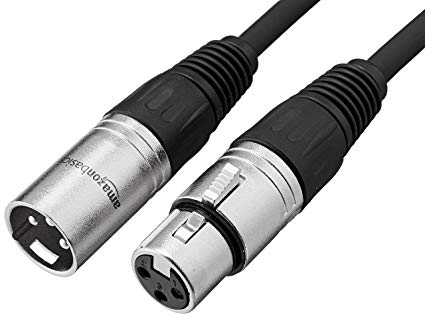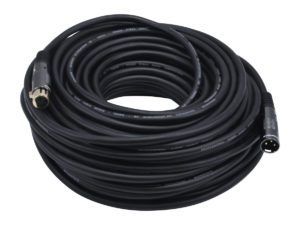Few people know it but XLR cable was invented by James Cannon, the founder of Cannon Electric, and was first used on Boeing airplanes. Later its application has spread onto audio equipment. The cable started to be used with microphones and other low-impedance devices. Since then has passed lots of time, however, XLR still remains choice number one when it comes to microphones gear.
The abbreviation XLR doesn’t mean much these days. X is just the number of the series – the previous one was U. L stands for latched or locking and R stands for resilient polychloroprene or simply rubber. They installed ribbon ring protectors inside cables – today such rings are often replaced by gold-plated contact rings. The rings can also be plastic, but this is quite rare.

Male and female are different ends of the cable. You need to be careful while choosing which end to connect with the input device and which one with the output one. As you can see, there are three conductors: ground, positive, and negative. They are all working in balance, however, let’s leave this information to those who are interested in physics.
What’s important for us is that XLR cables are perfect for conveying sound. There’s still a space for improvement, of course, but right now they represent the best option the market. You can connect two XLR cables to each other, so, for example, if you need a long cable to use on stage, you can find two short cables and make one long cable of them.

There should be a balance. You don’t need to buy the most expensive XLR cable you can find, but a nice average one may considerably improve the quality of your home-recording, studio-recording, or, in general, the experience of using the microphone(s).
The second factor to consider is something called capacitance. Capacitance is the amount of electricity that can be stored in the XLR cable due to the fact that it is impossible to pass all the electrical signals sent to the output device. Some signals remain inside, however, they don’t stay neutral there and do nothing. Due to these little picofarads, high-frequency sounds start to get ignored and not included in the final output. Your voice becomes smoother, the songs sung get warmer, etc. If you don’t want this to happen, it is better to choose cables with low capacitance – the ones that are less tolerable to storing electrical signals. In sum, the lower the capacitance, the more precise the outcome.

That was an instruction on how to choose the right cable for your microphone. We hope this information has helped you to figure out what cable you need. Stay tuned for new articles and master sound engineering with us.